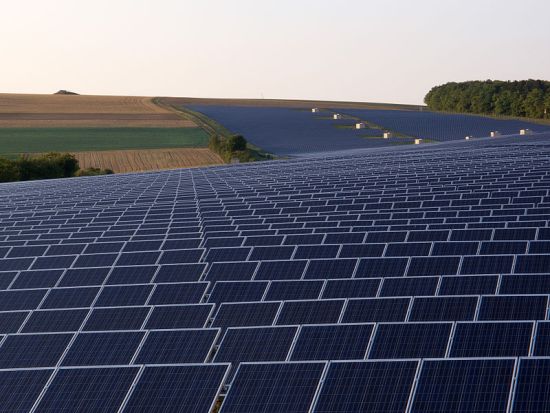Almost immediately after we empowered Boulder to form a utility, a spate of articles appeared in the national press talking about the relative costs of coal and renewables, and the trends in those costs. There was Krugman’s Here Comes Solar Energy Op-Ed in the NY Times, making the case that solar PV is already cheaper than coal-fired power once you remove all the subsidies we provide to both of them, and calling for the feds to fix regulation to make that clear. Boulder’s own RMI had a bit of commentary on Krugman’s opinion: it’d be nice if federal regulations were saner, but even without that fix, it makes sense to build this stuff now, and will only make more sense as time goes on and the balance of system costs (which currently make up 50% or more of the cost of a PV installation) are reduced through best practices, standardization and mass production.
From the industry side, GE’s Jeff Immelt also said that federal regulation was a little beside the point now… and that even without government support GE was going all-in, expecting something like 200GW of solar to be built in China and India by the end of the decade. That’d be a non-trivial amount of generation, on the order of 10 Three Gorges Dams, or as much power as the entire US nuclear generation fleet. Meanwhile NRG Energy, a nationwide and largely traditional fossil-fuel based independent power producer is planning to spend the overwhelming majority of its capital investment funds over the next few years on solar, mostly small utility projects (20-100MW) and distributed rooftop generation.
In the same vein, Xcel Energy’s recently filed 2011 Electric Resource Plan foresees essentially no new generation facilities being built until close to the end of the decade. Some of this is attributable to the soft economy, but many people are saying it’s just as much a consequence of energy efficiency, demand side management, and increasing distributed (behind-the-meter) generation coming on line. Unfortunately, Xcel’s Comanche 3 power plant added 750 megawatts of coal generation to the Colorado grid last year, and this lack of demand for more energy means the company is now walking away from the transmission lines that would have enabled large-scale solar-thermal with storage in the San Luis Valley. This means that the only way to shift Xcel’s power mix in the near future will be to accelerate the retirement of existing coal-fired generation, making room for more efficiency, wind, and solar.
The optimistic narrative that falls out of the articles above — that our energy systems are undergoing a transformation — seems plausible, and I hope that it’s true. Certainly it’s the one that the Boulder Light and Power effort is going to be built around. It’s comforting to see that we’re not alone on the world stage, and less daunting to imagine our job as facilitating an ongoing transformation, rather than starting one from scratch.



